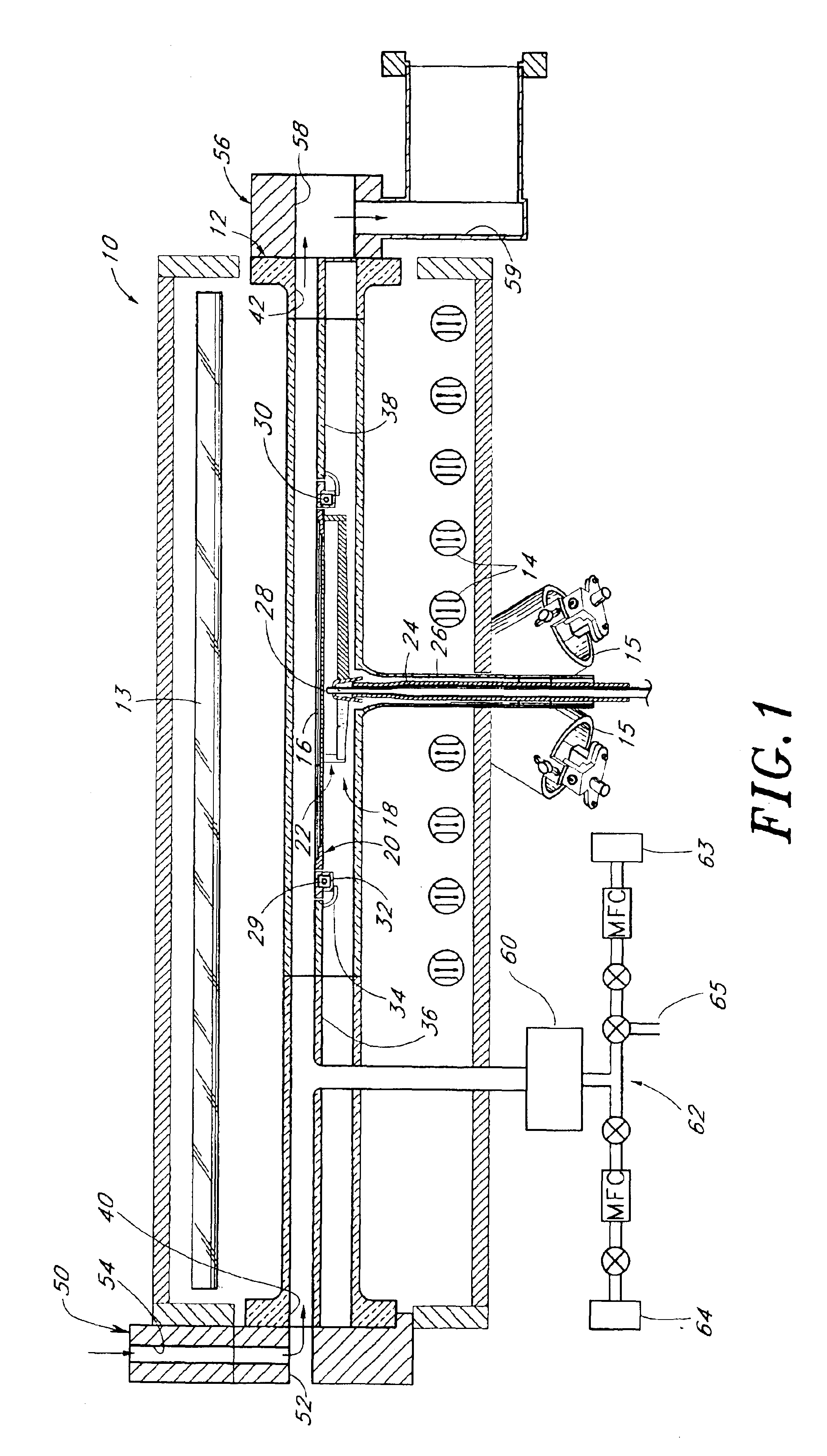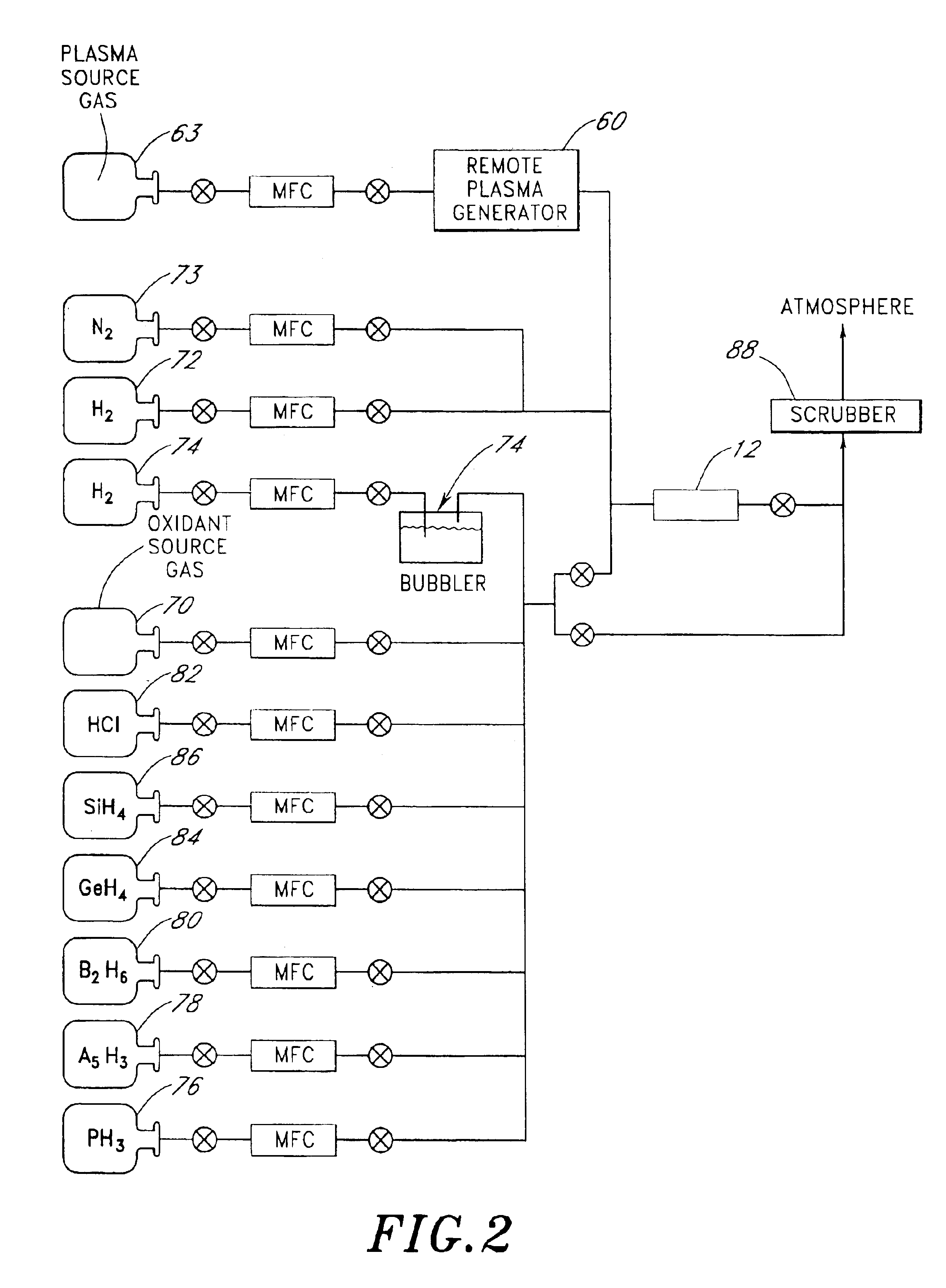Surface preparation prior to deposition
- Summary
- Abstract
- Description
- Claims
- Application Information
AI Technical Summary
Benefits of technology
Problems solved by technology
Method used
Image
Examples
Embodiment Construction
[0027]The skilled artisan will readily appreciate that the principles disclosed herein will have application to a variety of contexts in which interface preparation prior to deposition is desired. Such preparation is particularly advantageous for nucleation-sensitive and adsorption-driven processes.
[0028]In accordance with the preferred embodiments, the invention provides treatment of surfaces with plasma products prior to deposition. The plasma products preferably modify surface termination to make them susceptible to subsequent deposition
[0029]As noted in the Background section above, many deposition processes are sensitive to the surface over which deposition is required. Doped polysilicon and polycrystalline silicon-germanium alloy (poly-SiGe) tend to nucleate poorly over silicon oxide, as is well known in the art, and also over newer high-k materials now being investigated. The present invention provides a method for preparing the dielectric surface for electrode deposition the...
PUM
| Property | Measurement | Unit |
|---|---|---|
| Percent by atom | aaaaa | aaaaa |
| Temperature | aaaaa | aaaaa |
| Time | aaaaa | aaaaa |
Abstract
Description
Claims
Application Information
 Login to View More
Login to View More - R&D
- Intellectual Property
- Life Sciences
- Materials
- Tech Scout
- Unparalleled Data Quality
- Higher Quality Content
- 60% Fewer Hallucinations
Browse by: Latest US Patents, China's latest patents, Technical Efficacy Thesaurus, Application Domain, Technology Topic, Popular Technical Reports.
© 2025 PatSnap. All rights reserved.Legal|Privacy policy|Modern Slavery Act Transparency Statement|Sitemap|About US| Contact US: help@patsnap.com



